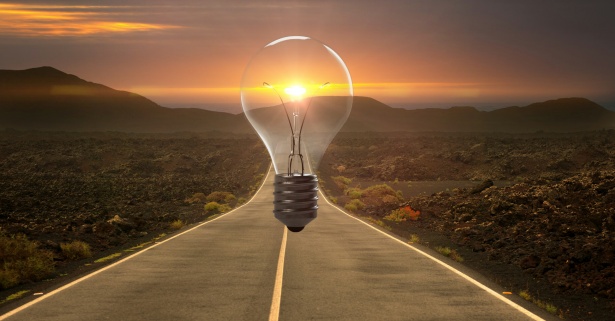We have transcended from the times when you had to hurt the environment to grow your business or harm your business to protect the environment. As governments and scientific studies underline the need for ‘green’ initiatives and sustainability, the present times have seen a convergence of business and the environment. Being green is no longer deemed an ostentatious concept; it is a necessity that drives innovation, produces business opportunities, and generates income.
The idea of integrating environmental concerns with daily life activities or business operations has gained a lot of traction. Businesses are keen to reinvent, reframe, and restructure existing products and technology in order to provide green alternatives that use fewer environmentally hazardous or resource-depleting raw materials. However, ‘green’ has become the new branding buzzword, and some people may use it casually to entice customers rather than researching and proving the true environmental impact of their products.
All products and services necessitate the extraction of natural resources and the production of wastes and emissions, both of which are nearly likely to have a negative impact on the environment. As a result, just because a product or service is labelled as green doesn’t mean it can fix the environment or have no environmental impact. It simply indicates that it has a lower environmental impact than equivalent products.
Because of the ‘green’ label, many products, services, and activities are now considered beneficial and conscientious. However, not everything that is green is useful. Debunking a few green myths will help you in making better and more informed decisions.
Myth 1: Get a green or electric car
Yes, driving an electric car produces no carbon emissions and does not contribute to air pollution directly, but have you considered the environmental impact of the manufacturing processes? During the manufacture of the Lithium-ion batteries that power them, a significant amount of CO2 is emitted. Although the concept of an electric car has the potential to transform the automotive industry, it will not be the most cost-effective option to go green until manufacturing and battery production become more efficient.
If you’re sincere about reducing your carbon footprint and commuting responsibly, you can take public transportation, carpool, bike, walk, or even avoid buying cars for the sake of it.
Myth 2: Switch to green cleaning products
We’re all aware that many common household cleaners contain chemicals like ammonia, chlorine, and alcohol, which can be harmful to our health and the environment. To emphasize the harmless nature of their products, brands may use terms like ‘natural,’ ‘eco-friendly,’ and ‘green.’ Instead of purchasing green products and being uncertain about what goes into them, we can create a few effective solutions at home.
A mixture of vinegar and baking soda mixed with hot water works as an effective mild cleaner. Essential oils can be added to give it a pleasant aroma. For stronger cleaners, you can replace vinegar with borax powder. Borax is wholly natural and carries no inherent toxic properties. Items like hydrogen peroxide can also be used for sanitizing, stain removal, and bleaching and tea tree oil and water for mold removal and disinfection.
Myth 3: Miyawaki plantation is an effective alternative to traditional forests
The Miyawaki method entails planting densely in small locations in a short amount of time. While this technology can help expand green cover in urban areas, it can never be a substitute for traditional and natural forests. Although this system can support ten times the number of trees as traditional forests, large trees such as mango, neem, guava, and others require space to flourish. Their growth is hampered when they are planted in confined locations. This strategy can be employed in congested areas of cities, but it cannot match the complex ecosystem of a forest. Grow-Trees.com conducts and encourages large-scale afforestation operations across the country in order to restore forests for the same reason.
Myth 4: Biodegradable things can be thrown anywhere
We usually fling a banana peel on the road without giving it much attention, convinced that it would decompose naturally and not affect the environment. We fail to recognise that green living entails proper garbage disposal as well as a reduction in the amount of waste we generate. Even if your biodegradable waste ends up in a landfill, it will take a long time to disintegrate because landfills are so densely packed. Microbial activity, water, sunlight, and oxygen are all required for anything biodegradable to break down. Stopping the creation of garbage in the first place is the best alternative to biodegradable waste.
Views of the author are personal and do not necessarily represent the website’s views.
 Supriya holds a Master’s in Environment Science from the University of Mumbai and has a post-graduate diploma in ‘Urban Environmental Management’ from WWF-National Law University, Delhi. She is passionate about current issues of environmental governance and aims to achieve sustainable solutions to the numerous social challenges. At Grow-Trees.com, she is helping corporates to mobilize the resources for adopting the triple bottom line in the businesses by developing various social impact-driven projects. In her free time, she likes to visit various sanctuaries in India, travels to unexplored places, and spend time with her pets.
Supriya holds a Master’s in Environment Science from the University of Mumbai and has a post-graduate diploma in ‘Urban Environmental Management’ from WWF-National Law University, Delhi. She is passionate about current issues of environmental governance and aims to achieve sustainable solutions to the numerous social challenges. At Grow-Trees.com, she is helping corporates to mobilize the resources for adopting the triple bottom line in the businesses by developing various social impact-driven projects. In her free time, she likes to visit various sanctuaries in India, travels to unexplored places, and spend time with her pets.


 Supriya holds a Master’s in Environment Science from the University of Mumbai and has a post-graduate diploma in ‘Urban Environmental Management’ from WWF-National Law University, Delhi. She is passionate about current issues of environmental governance and aims to achieve sustainable solutions to the numerous social challenges. At Grow-Trees.com, she is helping corporates to mobilize the resources for adopting the triple bottom line in the businesses by developing various social impact-driven projects. In her free time, she likes to visit various sanctuaries in India, travels to unexplored places, and spend time with her pets.
Supriya holds a Master’s in Environment Science from the University of Mumbai and has a post-graduate diploma in ‘Urban Environmental Management’ from WWF-National Law University, Delhi. She is passionate about current issues of environmental governance and aims to achieve sustainable solutions to the numerous social challenges. At Grow-Trees.com, she is helping corporates to mobilize the resources for adopting the triple bottom line in the businesses by developing various social impact-driven projects. In her free time, she likes to visit various sanctuaries in India, travels to unexplored places, and spend time with her pets.